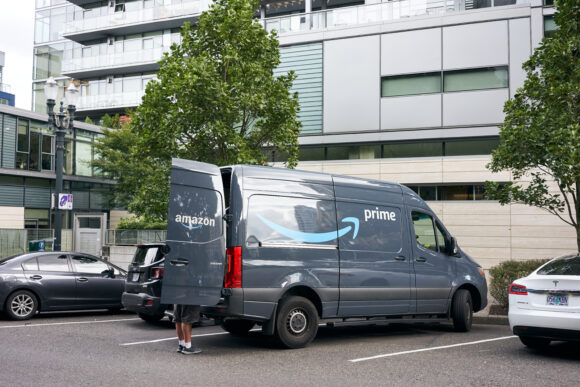Embedded insurance is everywhere. From booking a flight or buying concert tickets to opening a bank account, insurance is now being offered to consumers at the point of need. It makes access quicker, simpler, and more appealing for people who may not have sought it out otherwise.
But while embedded insurance has become a popular concept for consumers, the commercial auto insurance industry is just starting to realize the benefits–thanks, in part, to the exponential growth of the on-demand economy.
Our research has found that the number of hours Americans are driving for on-demand economy apps such as Uber and Amazon Flex is increasing significantly. In 2023, a majority of drivers (73%) said they were driving longer hours than just a year before–with 44% saying their driving hours had at least doubled. Yet, there’s still slow progression toward building suitable commercial auto insurance products and services for the drivers fueling this economy.
To drive for on-demand economy apps, U.S. drivers may require additional insurance, which varies between rideshare and delivery as well as by state regulations. That means traditional insurance policies can struggle to satisfy the needs of individual drivers. Most on-demand economy drivers drive part time around other jobs and priorities such as childcare, which means that traditional commercial coverage–typically designed for full-time work–doesn’t work for them. They need easy access to flexible, affordable coverage that’s tailored to their individual driving patterns.
But embedded insurance is changing the game, enabling insurers to offer on-demand economy drivers a seamless, frictionless experience that quickly matches them to the appropriate coverage for the type of work they do (transportation or courier, for example).
Platform partners offer insurers a direct link to the driver, sharing data that enables better underwriting, leading to improved loss ratios and competitively priced insurance products. Combining data from the platform, from claims and other proprietary datapoints relevant to the on-demand driver–including location, weather, vehicle type, how the vehicle is used, where it is parked, miles driven, hours driven, driver history, driver work location, and driver insurance claims–ensures that coverage is comprehensive and adaptable to the type of work the on-demand driver chooses to do. Drivers are not only matched to appropriate insurance but also covered for risks they didn’t realize they needed.
For example, food delivery drivers might already be covered for business use, but they might not know they also require hire and reward insurance. (Editor’s Note: Hire and reward insurance is a type of commercial motor policy that allows drivers to carry passengers or parcels in return for payment.)
As a result, drivers can simply “tap and drive” with confidence they are comprehensively protected at the right price. The outcome is drivers getting more suitable products, platforms having more content drivers, and insurers getting better underwriting results.
While it sounds simple, embedded commercial auto insurance for the on-demand driver requires a specialist skill set and deep knowledge of both insurance and technology. Capacity and reinsurance companies need to see proof that their partners understand the complexity of commercial auto insurance.
For the insurance industry to truly meet the needs of on-demand drivers and partners, it must successfully combine tech and data innovations with insurance incumbents’ decades-long expertise and partnerships with platforms.
Embedding insurance is not a case of dropping in a product; it needs to be co-designed around real user behavior. This approach creates a symbiotic relationship between the platform, the insurer, and the insured (driver), meaning on-demand products can be developed–such as Amazon’s embedded wallet solution, Pay-as-you-Flex, a wallet-based, by-the-minute insurance product for on-demand courier work in the UK, developed by INSHUR.
Embedded insurance, when deployed effectively, enables drivers to access the exact level of coverage they need to match their work and lifestyles, and helps insurers make sure that coverage is comprehensive and adaptable to the type of work the on-demand driver chooses to do.
Was this article valuable?
Here are more articles you may enjoy.



 Viewpoint: Agentic AI Is Coming to Insurance Industry – Much Faster Than You Think
Viewpoint: Agentic AI Is Coming to Insurance Industry – Much Faster Than You Think  Florida, East Coast to See Big Insured Losses From More Cat 5 Storms, Researchers Say
Florida, East Coast to See Big Insured Losses From More Cat 5 Storms, Researchers Say  Baldwin Group to Buy CAC Group for About $1B in Cash and Stock
Baldwin Group to Buy CAC Group for About $1B in Cash and Stock  ‘Dream Is in Sight:’ Chamber, Reinsurers, Insurers Urge Florida to Stay the Course
‘Dream Is in Sight:’ Chamber, Reinsurers, Insurers Urge Florida to Stay the Course 



